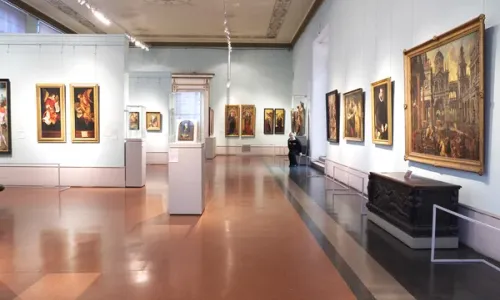Answers For Goodwood Museum
Answers and detail explain for Goodwood Museum
Explain
Goodwood Museum

Reporter: The Goodwood Museum is currently celebrating some of the most extravagant types of car design in its festival of speed. Here's our reporter Vincent Freed, who's on site, to tell us about some of the cars on display.
Well, here I am, standing in front of one of the most prestigious cars ever built, the Duesenberg, a fantastically expensive, luxurious car built in the early part of the 20th century and bearing all the glamorous qualities of the jazz age. How many were there? Well, 1only 473 Duesenberg J-types were ever built and the model here is one of the rarest.
Each had a short 125-inch chassis or framework and 2the body was always in the form of an open two-seater.
The technology behind the car's 6.9-litre engine was extraordinary. It featured 3capsules of mercury in the engines to absorb vibration and provide an incredibly smooth ride.
In fact, these cars offered unparalleled performance, in an age when 160 kilometres per hour was considered very fast, the Duesenberg promised 4a top speed of 180 kilometres per hour and could do 140 kilometres per hour in second gear.
Duesenberg, who designed the car, 5sold it as a frame and engine ... this was typical of the age again and many prestige manufacturers such as Rolls-Royce did exactly the same. Owners able to afford the hefty $9,000 price tag for the basic car would then commission a coachwork company to build a body tailored to their own individual requirements.
The Duesenberg's 6great attraction for the driver was its instrument panel which offered all the usual features but also several others including a stop-watch.
It was the Duesenberg's technology that lay behind its success as a racing car and they dominated the American racing scene in the 1920s winning the Indianapolis Grand Prix in 1924, '25 and '27.
On to another celebrity, the 1922 Leyat Helica. 7Only 30 of these French propeller cars were built and the model here at Goodwood, which was the fourth to be made, is thought to be the only surviving example still capable of running.
The brains behind this car was Marcel Leyat who was an aviation pioneer first and foremost, and the influence of flying is quite apparent in the car. The Leyat very 8strongly resembles a light aircraft with its front propeller but in this case it's 9minus any wings of course!
It's quite odd to think that this car was whirring through France, just as the Duesenberg was blasting down roads at 160 kilometres per hour across the Atlantic. The Leyats were used regularly in France in the 1920s and were even produced in saloon and van form, as well as two-seater. The Leyat matched its propeller drive with its equally bizarre 10steering which used the rear rather than the front wheels! But despite looking rather frail, it was a tough machine. In fact, when troops tried to steal it during the Second World War, the car's baffling design was clearly beyond the would-be thieves and it ended up being driven into a tree, breaking the propeller.
Questions 1 - 10:
Complete the notes below. Write NO MORE THAN THREE WORDS AND/OR A NUMBER for each answer
GOODWOOD CAR SHOW
Type of car: Dueqenberq J-type
Number made: 1 (473)
Type of body: 2 (open 2-seater | open two-seater | open 2 seater | open two seater)
Engines contained capsules of mercury to ensure a 3 (smooth) trip.
Top speed: 4 (180) kilometres per hour.
Sold as a 5 (frame and engine)
Main attraction: 6 (instrument panel | instruments | stop-watch)
Type of car: Leyat Helica
Number built: 7 (30)
Car looks like a 8 (light aircraft | plane) without 9 (wings)
Steering used the 10 (rear wheels)
![[Forecast Q2-2025] - Biology lecture](https://static.helik.app/reading/8fd3d7d2-ccf9-47a3-8920-2e7a3b0d6607)
![[Forecast Q2-2025] - Living in the City](https://static.helik.app/reading/1a60bcf3-f3a7-4e9b-97a2-94d156a0de3b)
![[Forecast Q2-2025] - Student Union](https://static.helik.app/reading/fb443123-8c1d-447e-8c79-5a01650f4754)
![[Forecast Q2-2025] - Fruit-picking Job in an Orchard](https://static.helik.app/reading/e1968346-6c55-44ae-b8d3-f6a4fb7207b9)
![[Forecast Q2-2025] - University Crime Prevention](https://static.helik.app/reading/bdda593e-16d6-4c72-8a12-b116e917b27c)
![[Forecast Q2-2025] - Business Course](https://static.helik.app/reading/3308e282-99a6-4bcb-9d22-0b488701d968)
![[C20T1] - Choosing a restaurant](https://static.helik.app/reading/e9b21123-c43c-42fb-88b7-5d0be3a37e03)
![[C14T2] - Total health clinic](https://static.helik.app/reading/6547e1de-3ddc-4a31-b210-8f86109d6684)